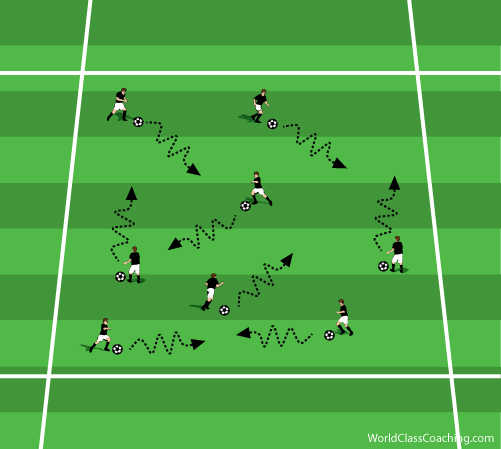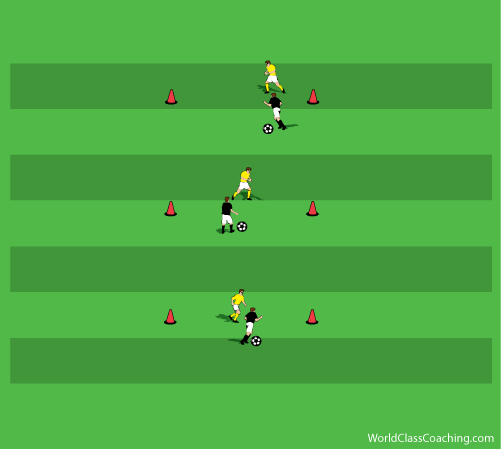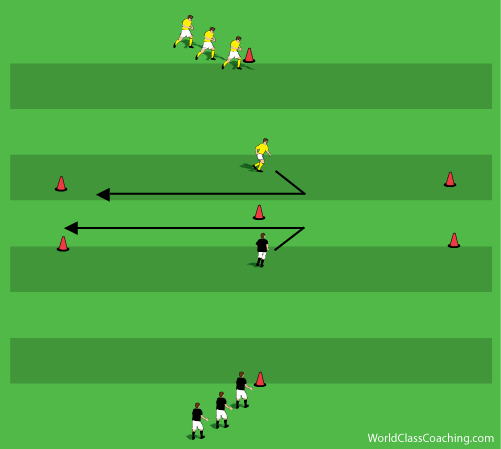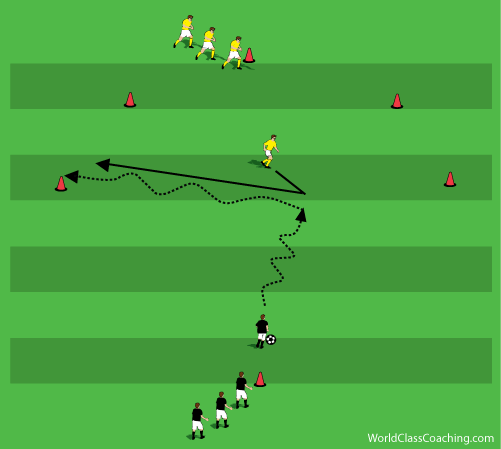We had a discussion in the office the other day about the difference between fakes and moves. The discussion revolved around how you can use a move that doesn't fake the defender and whether we should be teaching young players moves or how to fake.
This is an interesting subject because there's no shortage of DVDs that promise to teach your players to be more 'skillful' by showing you 10 different moves. But what is missing from many of these moves is an emphasis on faking the defender into believing you are going one way while you're actually going the other. Faking is often mentioned as one of the steps but seldom is it given the focus is deserves. You can move your feet in a million different patterns but it's just dancing around the ball unless the defender is 'faked' into believing that you're going that way and then move to block your path. This allows you to take the ball into the space that is left by the defender.
If you teach your players how to fake the defender before you teach them any moves, they will have a better foundation to build from. Here is a practice that I've used with good success.

Warm-Up
The players each dribble a ball around an area. At first they just dribble freely. Next, I ask them to change speeds so they dribble slowly and then explode to dribble quickly. I stress that the difference should be obvious to anyone watching. I don't want them to dribble at a medium speed, it should either be slow or fast. After that, I ask them to change direction each time they change speed. Finally, the players are encouraged to add a move between the slow dribbling and the explosive, fast dribbling. I don't coach or correct the moves, just the change of direction and speed.

Between Two Cones
The next phase is to put the players into groups of two or three. Three works best because two can compete while one judges whether or not a point is scored. One player is on attack and the other defends. The attacking player attempts to get to cone before the defender. He tries to fake the defender into committing one way so he can go the other. The game lasts one minute and then then three players change roles. This is done three times so that each player has a chance to attack, defend and judge.

Progression
Adding a ball makes this a much more difficult game for the attacker. Both players can be given a ball to make is more equal and to give the players more touches on the ball.

Faking to Beat a Player.
A line of attackers face a line of defenders 16 yards apart. A cone is placed in the middle that neither player can cross. The attacking player runs toward the middle and the defender comes out to meet him. The attacker tries to fake the player with quick movements and then race him to a gate. The defender tries to tag the attacker before they make it through the gate. This starts to look more like a game situation now that the players are moving toward each other
There are many different coaching points that can be offered depending on the age a ability of the players.

Progression
Now we add a ball but we move the gates so that they are at a diagonal behind the defender. This encourages the attackers to get behind the defender rather than just running sideways.
This progressions of exercises gives the players an understanding of how to fake a defender. When the players are taught various moves they will use this understanding of fakes to make the move more effective.


